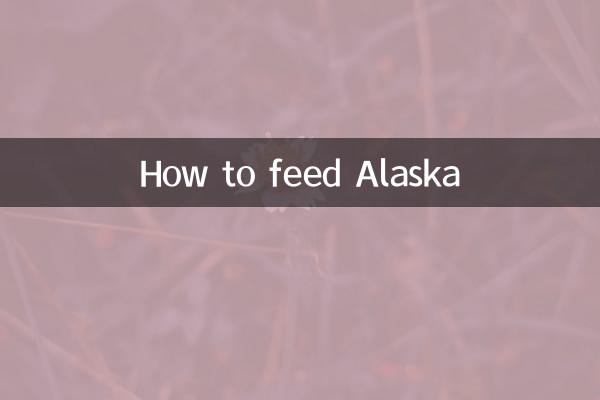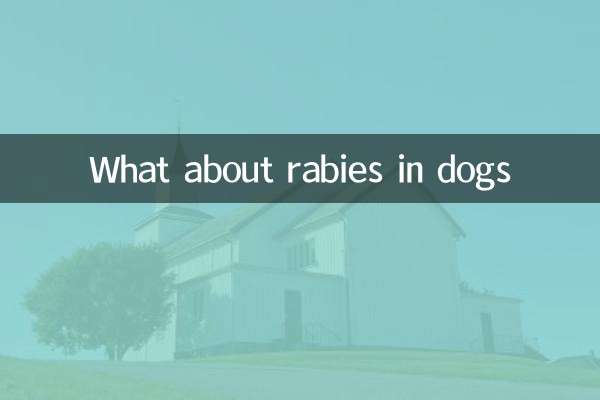How to feed Alaska: Combining scientific feeding guides with hot topics
Recently, the topic of pet feeding has remained popular on social media, especially the feeding methods of large dogs such as Alaska have attracted much attention. This article will combine popular topics across the network for nearly 10 days to provide you with a structured Alaska feeding guide to help you take care of your dog scientifically.
1. Basic points of Alaska feeding

As a large working dog, Alaska has a high demand for nutrition. Here are the core precautions when feeding:
| Age stage | Daily feeding times | Recommended food types | Care demand |
|---|---|---|---|
| Puppy (2-6 months) | 4-5 times | Special food for puppies + goat milk powder | 2000-2500kcal |
| Growth period (6-12 months) | 3 times | High-protein dog food + calcium supplement | 2500-3000kcal |
| Adult dog (over 1 year old) | 2 times | Adult dog food + appropriate amount of meat | 3000-3500kcal |
2. Analysis of recent popular feeding topics
Based on the network popularity data over the past 10 days, we have compiled the following high-frequency discussion points related to Alaska feeding:
| Hot Topics | Discussion hot topic | Key Suggestions |
|---|---|---|
| Controversy about feeding raw flesh | ★★★★★ | Need professional guidance and pay attention to parasite risks |
| Summer heat prevention diet | ★★★★☆ | Increase moisture and add cucumbers and other cool ingredients in moderation |
| Joint health foods | ★★★☆☆ | Supplement of glucosamine and chondroitin |
| Homemade dog food trend | ★★★☆☆ | It is necessary to ensure balanced nutrition and avoid long-term single food |
3. The golden rule of Alaska feeding
1.Timing and quantitative:Alaska is prone to overeating and must strictly control the amount of food and feeding time.
2.Balanced nutrition:Protein should account for more than 30%, fat should be 15-20%, and carbohydrates should be 40-50%.
3.Enough moisture:Adult Alaska requires 3-4 liters of water per day, and more in summer.
4.Taboo food:Chocolate, grapes, onions and other foods that are toxic to canines must be strictly avoided.
4. Feeding adjustments in different seasons
According to the recent hot discussions on high summer temperatures, special reminders:
| season | Dietary adjustment | Things to note |
|---|---|---|
| summer | Reduce food intake by 10% and increase moisture | Avoid feeding at noon to prevent heat stroke |
| winter | Increase caloric intake by 15% | Animal fat can be added in moderation |
5. Answers to common feeding questions
Q: Can I eat rice in Alaska?
A: It can be added in moderation, but it should not exceed 30% of the staple food. It is recommended to choose brown rice to be healthier.
Q: How to determine whether the feeding amount is appropriate?
A: When touching the ribs, you should be able to touch easily but not protrude significantly, and there should be moderate curves on the waist.
Q: What nutritional supplements do you need to supplement?
A: Usually, supplements of joint health ingredients, Omega-3 fatty acids and vitamins are needed.
6. Expert suggestions and latest research
Based on the latest results of the recent Pet Nutrition Symposium:
1. Alaska has a higher utilization rate of animal protein than plant protein, so it is recommended to choose high-quality dog food with high meat content.
2. Probiotic supplementation can improve common gastrointestinal sensitivities in Alaska, and it is recommended to 2-3 times a week.
3. Elderly Alaska (above 7 years old) should reduce phosphorus intake to protect kidney function.
7. Summary
Scientific feeding of Alaska requires combining individual differences and seasonal changes in dogs. The recent hot discussions on the Internet about raw flesh and meat feeding and summer diet adjustments are worth paying attention to, but they need to be adopted with caution. It is recommended to have regular physical examinations and adjust your diet according to the veterinary advice to keep your Alaska healthy.

check the details

check the details